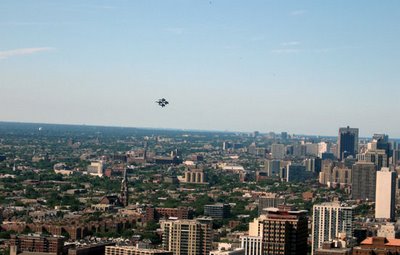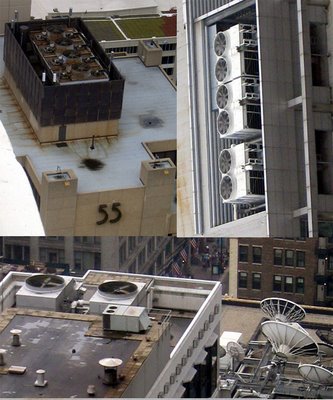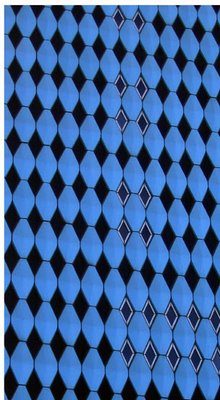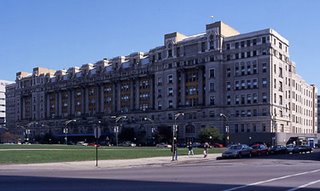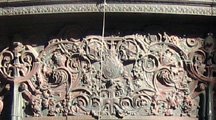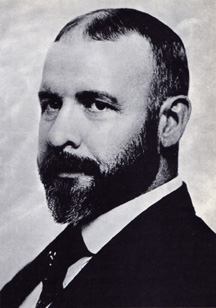 The facades of showcase Chicago buildings of the 20's and 30's are often ripe with restrained ornament. How often do we really see it? How often, instead, do we just see past it, letting it fade into the visual noise of the contemporary streetscape?
The facades of showcase Chicago buildings of the 20's and 30's are often ripe with restrained ornament. How often do we really see it? How often, instead, do we just see past it, letting it fade into the visual noise of the contemporary streetscape?Recently, I'm been taking a closer look and, frankly, a lot of it is pretty stiff - well crafted but ossified depictions of classical motifs, like the lady to the left, who resides on the 545 North Michigan Building that hosts a new Nokia store. You might take her home to mother, but probably not for a night on the town.
The reliefs at the McGraw Hill Building, at 520 North Michigan are different. The work of artists Gwen Lux and Eugene van Breeman Lux, they use the same types of subjects found everywhere else, but the lines are clean, loose - almost improvisational, like pencil sketches. I can't decide whether the style reminds me more of early Picasso or James Thurber, but the result is delightful. (I've compressed the proximity of the panels by taking out the windows in between.)
 The building itself is probably the biggest-scale facadectomy in architectural history. In 1999, after an agreement between preservations and developer John Buck, over 4,000 stone panels were painstakingly removed and the actual building, a 16-story high, 1929 design from Thielbar & Fugard, demolished. It had seen better days. I worked in the building for a time and remember two things: the faded but still impressive, wood-paneled chairman's office on the penthouse floor, with its impressive views down Michigan avenue, and the day I reached down to pick up what I thought was a tortoise-shell comb only to discover it was actually a ridged potato chip crawling with ants.
The building itself is probably the biggest-scale facadectomy in architectural history. In 1999, after an agreement between preservations and developer John Buck, over 4,000 stone panels were painstakingly removed and the actual building, a 16-story high, 1929 design from Thielbar & Fugard, demolished. It had seen better days. I worked in the building for a time and remember two things: the faded but still impressive, wood-paneled chairman's office on the penthouse floor, with its impressive views down Michigan avenue, and the day I reached down to pick up what I thought was a tortoise-shell comb only to discover it was actually a ridged potato chip crawling with ants.A new building was erected, matching the massing of the original, and the facades carefully re-assembled, like a jigsaw puzzle, using the original panels. The historic storefronts have been restored and retail still commands the lower floors, part of the Nordstrom's-anchored North Bridge Mall, but the rest of the building is now a modern hotel.
 The ram you see above is paired at the opposite end of the floor with an equally charming ram. The next time you're walking down this stretch of the Mag Mile, especially if it's a sunny day, look up. It's one of the best shows on the street.
The ram you see above is paired at the opposite end of the floor with an equally charming ram. The next time you're walking down this stretch of the Mag Mile, especially if it's a sunny day, look up. It's one of the best shows on the street.





